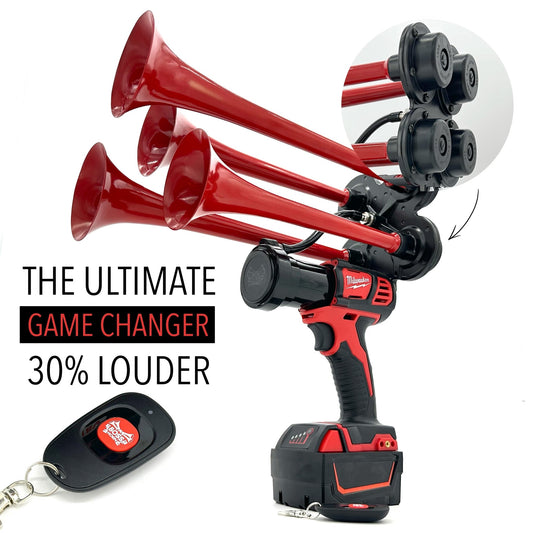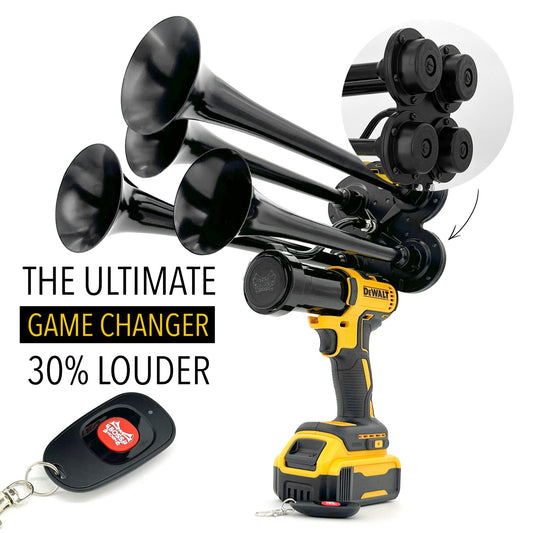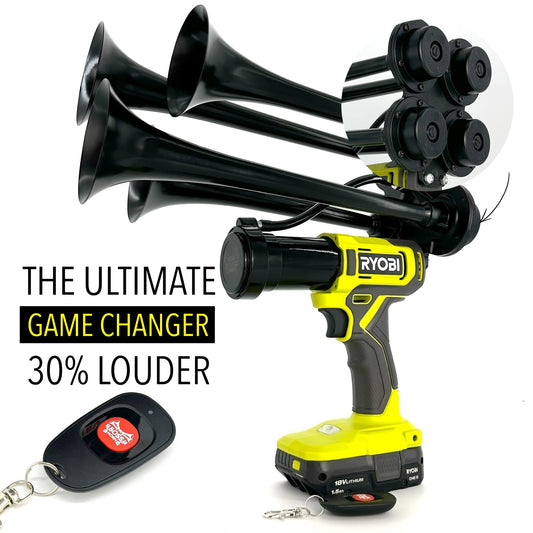The loud and distinctive sound that accompanies fire trucks is a vital component of their operation. This attention-grabbing noise is designed to warn other road users and pedestrians of their approach, ensuring a clear path for firefighters and first responders. Without this distinctive audio warning, response times to emergencies could be delayed, putting lives and property at further risk.
Dating back to the early days of firefighting, the need for an audible alarm system became apparent as fire departments grew and expanded. In the early 20th century, fire trucks were equipped with manually operated sirens, creating a wailing sound that instantly signaled the urgency of their mission. Over time, technological advancements led to the development of electronic sirens, providing fire trucks with the capacity for louder and more efficient warning sounds.
Today, the distinctive siren of a fire truck serves as a vital tool in ensuring the safety and efficiency of emergency response efforts. In crowded urban areas, where traffic congestion poses a constant challenge, the blaring noise of a fire truck horn swiftly grabs the attention of motorists and pedestrians alike. This attention to road safety enables firefighters to maneuver through congested streets and intersections, minimizing response time and maximizing their ability to save lives and mitigate fire damage.
It is estimated that every year, fire departments across the country respond to millions of emergency calls, ranging from structural fires to medical emergencies. In these crucial moments, every second counts, and the sound of a fire truck horn becomes more than just a noise; it is a lifeline. Research indicates that the use of audible alarms has significantly reduced emergency vehicle-related accidents, providing a relatable solution to the challenges faced by fire departments in navigating through traffic during emergencies.
The importance of the fire truck horn cannot be overstated. It is an essential element of our emergency response system, allowing firefighters and first responders to swiftly and safely reach those in need. Without the unmistakable blare of the horn, the time-sensitive nature of emergency services would be compromised, jeopardizing both the victims of the crisis and the brave individuals working to help them.
What are the benefits and uses of the fire truck horn in America?
The fire truck horn plays a crucial role in the operations of fire departments throughout the United States. This article explores the various advantages and practical applications of the fire truck horn, highlighting its significance in emergency response and public safety. Read on to discover how this vital component aids firefighters in their daily tasks and enhances their ability to navigate through traffic and alert the public during emergencies.
The fire truck horn serves as a powerful warning device that alerts pedestrians and motorists to the presence of a fire truck in the vicinity. Its distinct and attention-grabbing sound is designed to cut through ambient noise and grab the attention of those nearby, prompting them to clear the way quickly. By eliciting immediate reactions, the fire truck horn helps create a safe passage for emergency vehicles, allowing firefighters to swiftly reach their destination, and ultimately saving lives.
Furthermore, the fire truck horn also plays a crucial role in establishing communication between firefighters and the public. During emergencies, a series of different horn patterns are used to convey specific messages to both pedestrians and other drivers. These patterns can signal warnings, indicate directions, or notify the presence of hazardous situations. The fire truck horn's versatility is key in managing traffic and ensuring the safety of both responders and the general public.
In addition to its practical functions, the fire truck horn also symbolizes the presence of help and protection. The loud and distinct sound invokes a sense of urgency and reassurance, letting people know that professional assistance is on its way. This symbolism helps to instill a sense of calm in chaotic emergency situations, providing a familiar and comforting sound amidst the chaos.
The next part of this article delves deeper into the functionalities and technical aspects of the fire truck horn, shedding light on its specific features and the regulations surrounding its usage. Stay tuned to discover more about this indispensable component of firefighting equipment and its critical role in safeguarding communities across the United States.
The Evolution of Fire Truck Horns
Fire truck horns are an essential component of emergency vehicles that serve a crucial role in notifying pedestrians and other motorists of an approaching fire truck. Over the years, fire truck horn technology has progressed significantly, ensuring improved safety and efficiency during emergency responses. Let's explore the evolution of fire truck horns and how they have transformed over time.
Traditional Air Horns
In the past, fire trucks were equipped with traditional air horns that operated on a pneumatic system. These air horns relied on compressed air to produce a loud sound that could be heard over long distances. While effective to some extent, traditional air horns had limitations in terms of sound projection and control.
Despite their drawbacks, traditional air horns served their purpose for many years. However, as emergency services evolved and technology advanced, fire truck horn designs also underwent significant upgrades.
Electronic Sirens
In recent years, electronic sirens have become the standard for fire truck horns. These modern horns utilize electronic components and advanced sound engineering techniques to produce loud, attention-grabbing sounds. Unlike traditional air horns, electronic sirens offer precise control over sound volume and pitch.
Electronic sirens are typically programmed with various tone options, allowing firefighters to choose the most appropriate sound for different scenarios. This versatility enables them to tailor the horn's tone to specific situations, further enhancing their effectiveness.
Integrated PA Systems
Modern fire trucks often feature integrated public address (PA) systems that work in conjunction with the horn. These systems enable firefighters to communicate vital information through a powerful loudspeaker. The combination of a loud horn and a PA system ensures that both sound and verbal messages can be effectively transmitted to pedestrians and motorists.
Integrating a PA system with the fire truck horn provides an additional layer of safety for emergency responders. By broadcasting important instructions or warnings, firefighters can ensure that everyone in the vicinity is informed and can respond accordingly.
Statistics:
- The average decibel level of a fire truck horn is around 120 dB.
- Fire truck horns can be heard from a distance of up to one mile.
- Electronic sirens have a wider frequency range, allowing for greater sound differentiation.
- Modern fire truck horns are built to withstand extreme weather conditions, ensuring reliability in all situations.
https://youtube.com/watch?v=-0jEWI4a0xQ
Frequently Asked Questions about Emergency Vehicle Sirens:
1. What is the purpose of the distinct sound emitted by emergency vehicles?
Emergency vehicle sirens serve as an auditory warning system to alert other road users of their presence and to request the right of way. The unique sound immediately grabs attention and prompts drivers to safely move aside, allowing emergency vehicles to navigate through traffic efficiently.
Key information:
- Emergency vehicle sirens have a distinct sound to facilitate quick recognition.
- The purpose of the sirens is to warn other road users and request the right of way.
- The sound of the sirens prompts drivers to safely yield and allow emergency vehicles to pass.
2. How are emergency vehicle sirens designed to capture attention effectively?
Emergency vehicle sirens are meticulously engineered to produce a piercing, high-pitched sound that cuts through background noise and effortlessly grabs attention. This design ensures that the siren can be heard from a considerable distance, even in noisy environments. Additionally, sirens are usually equipped with multiple sound frequencies and varying patterns to maximize effectiveness in different situations.
Key information:
- Emergency vehicle sirens are designed to produce a piercing, high-pitched sound.
- The siren's sound is engineered to cut through background noise effectively.
- Sirens may feature multiple sound frequencies and patterns for optimal performance.
3. Do emergency vehicle sirens have any specific requirements or regulations?
Yes, emergency vehicle sirens are subject to strict regulations to ensure their appropriate use and avoid unnecessary disturbance. These regulations vary by jurisdiction, but generally dictate the permitted sound levels, duration, and specific operational guidelines for emergency vehicles. Compliance with these regulations is crucial in order to maintain the integrity and effectiveness of emergency vehicles' auditory warning systems.
Key information:
- Emergency vehicle sirens are regulated to maintain appropriate use and prevent excessive disturbance.
- Regulations govern factors such as sound levels, duration, and operational guidelines.
- Compliance with these regulations is essential for maintaining the integrity and effectiveness of emergency vehicles' sirens.
4. Can emergency vehicle sirens have different modes?
Yes, modern emergency vehicle sirens often feature multiple modes that can be selected based on the situation at hand. For instance, sirens may have a standard mode, which emits a continuous wailing sound, or an alternate mode that utilizes intermittent tones. The ability to switch between modes allows emergency personnel to adapt to specific traffic conditions or emergencies requiring different levels of attention.
Key information:
- Emergency vehicle sirens can have multiple modes to suit various situations.
- Modes may include continuous wailing sound or intermittent tones.
- Different modes enable emergency personnel to adapt to distinct traffic conditions or emergencies.
5. Are emergency vehicle sirens accompanied by any visual signals?
In addition to sound, emergency vehicles often incorporate visual signals to enhance their presence on the road. Flashing lights, commonly in vibrant colors such as red or blue, are used in conjunction with sirens to create a multi-modal alert system. The combination of audio and visual stimuli ensures maximum visibility, especially in scenarios where road users may have limited auditory perception, such as when wearing headphones or inside soundproof vehicles.
Key information:
- Emergency vehicles frequently use visual signals, such as flashing lights, alongside sirens.
- Flashing lights enhance the presence of emergency vehicles on the road.
- The combination of audio and visual stimuli maximizes visibility for all road users.
Overall, emergency vehicle sirens play a critical role in ensuring swift and safe responses to emergencies. These specially designed auditory warning systems effectively capture attention, comply with regulations, and can be adapted to different scenarios. Coupled with visual signals, emergency vehicle sirens create a comprehensive alert system that enhances the safety of both emergency personnel and the general public.
Conclusion
The US fire truck horn is a crucial tool for emergency services, ensuring the safety and efficiency of firefighting operations. Its distinctive sound, produced by a combination of air horns and electronic sirens, alerts pedestrians and motorists to make way for the approaching fire truck.
The US fire truck horn serves multiple purposes, such as clearing traffic congestion, warning pedestrians of potential danger, and notifying other emergency vehicles of their presence. Its powerful sound, often reaching up to 120 decibels, is effective in capturing attention and commanding immediate action.
Moreover, the horn's unique tone distinguishes it from other vehicles, allowing people to quickly identify the presence of a fire truck and react accordingly. This helps prevent accidents and facilitates the timely response of emergency personnel to critical situations.
The US fire truck horn is engineered to adapt to different scenarios and surroundings, incorporating features such as adjustable volume levels and variable siren tones. This flexibility ensures that the horn remains effective in various environments and allows firefighters to modify the sound pattern as needed.
Overall, the US fire truck horn plays a vital role in ensuring the safety and efficacy of firefighting operations. Its powerful and distinctive sound serves as a clear signal for everyone to yield and make way for emergency vehicles, enabling firefighters to reach their destinations swiftly and effectively.














